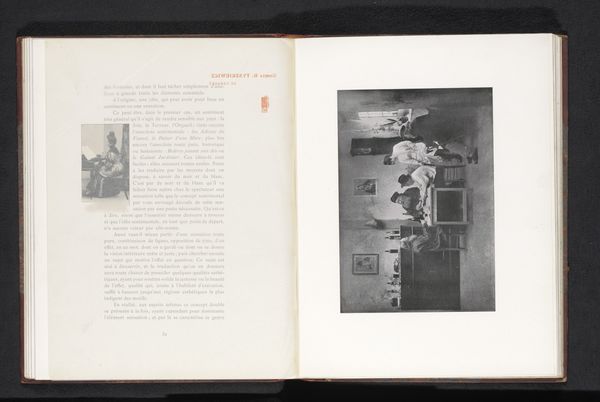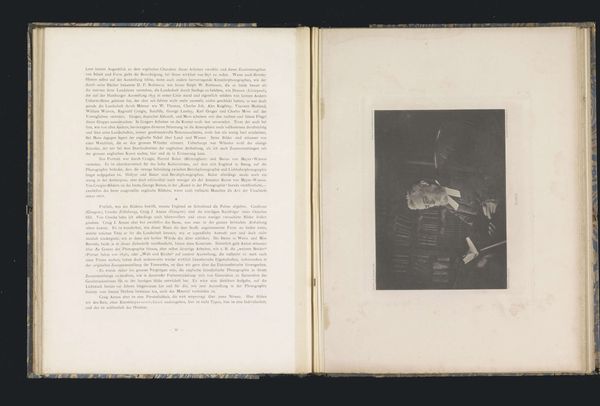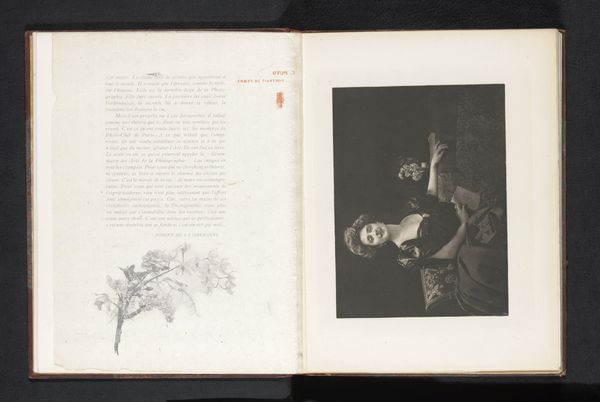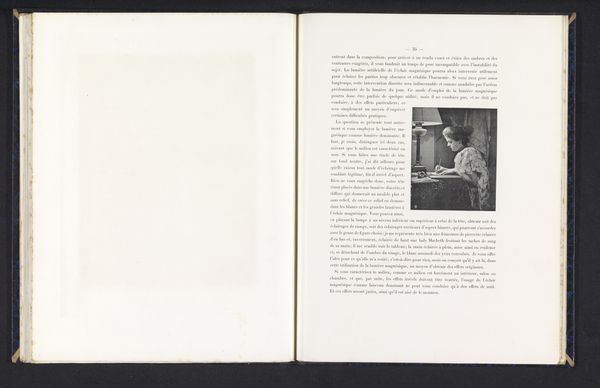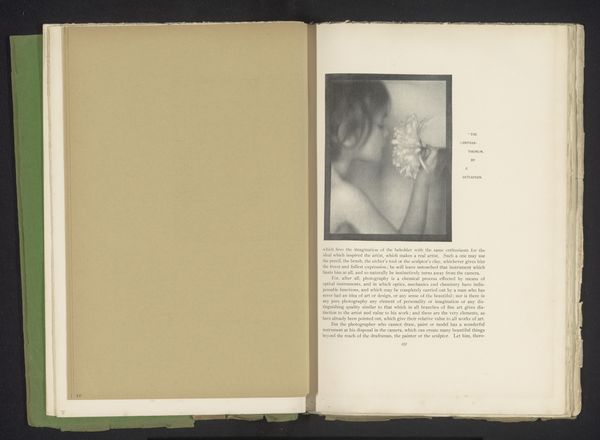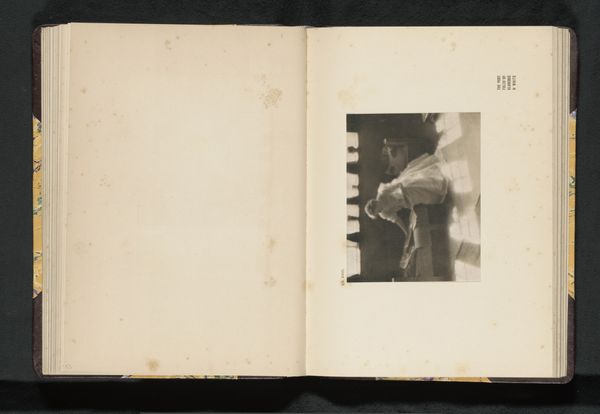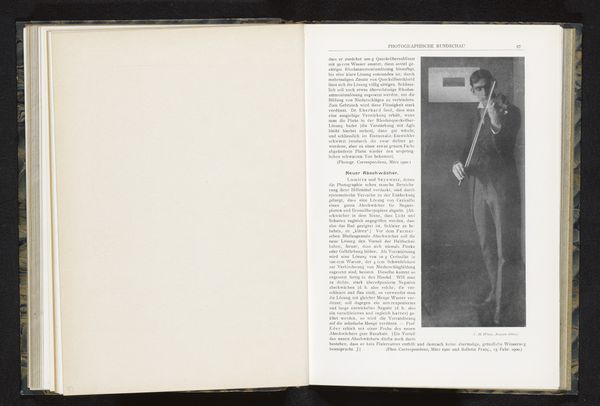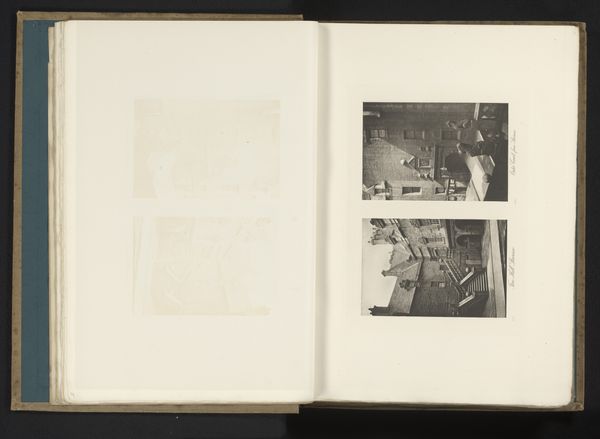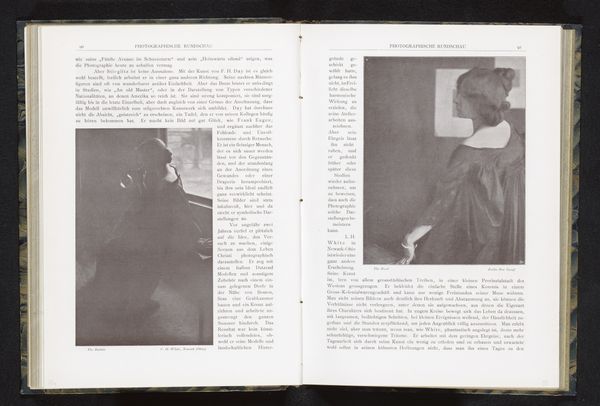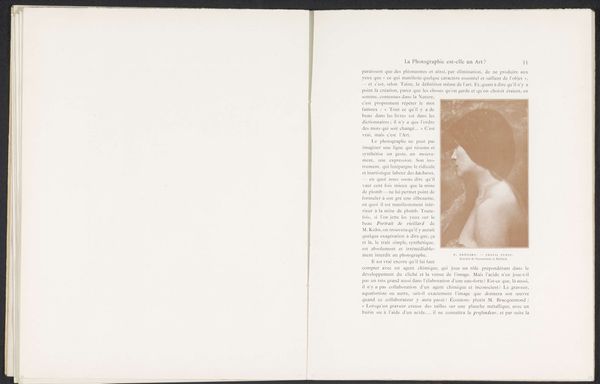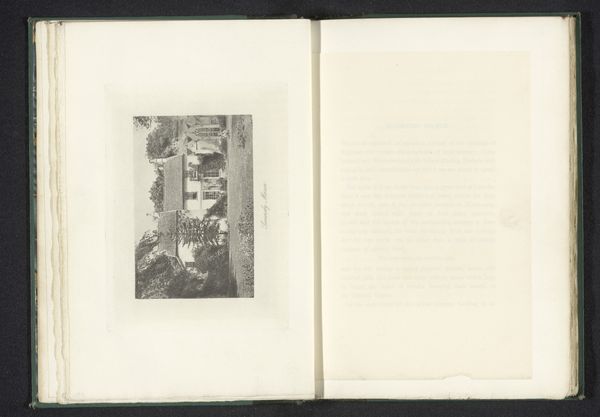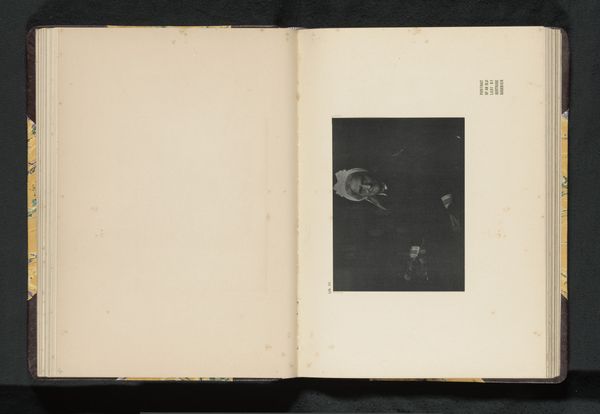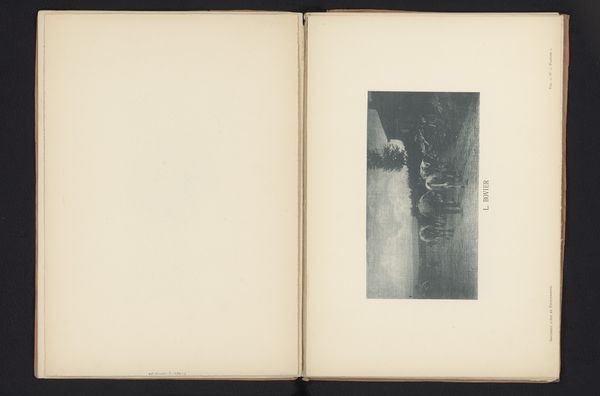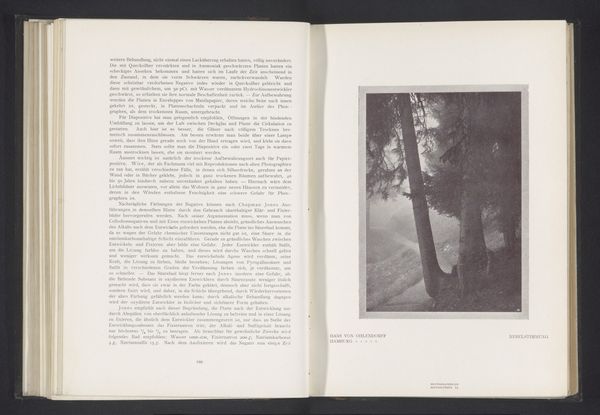
paper, photography, gelatin-silver-print
#
portrait
#
type repetition
#
aged paper
#
homemade paper
#
pictorialism
#
paperlike
#
typeface
#
paper texture
#
paper
#
photography
#
stylized text
#
gelatin-silver-print
#
thick font
#
thin font
#
small font
Dimensions: height 130 mm, width 169 mm
Copyright: Rijks Museum: Open Domain
Curator: We’re looking at a page from a book featuring “Portret van een onbekende man,” or "Portrait of an Unknown Man," a gelatin silver print made before 1900, and now held at the Rijksmuseum. Robert Demachy is the artist. What are your initial thoughts? Editor: The overall tonal range, the greyscale feels almost painterly. I’m intrigued by what looks like handmade paper surrounding the photo itself, acting like a border. It definitely emphasizes the materiality and physicality of the object, moving away from any idea of straightforward photographic representation. Curator: Indeed, and that’s classic Pictorialism at play— photography consciously blurring the lines with painting. There's a softness, a deliberate lack of crisp detail. The subject seems to be enveloped in shadows, creating an air of introspection and maybe even melancholy. Note how Demachy eschews typical portrait conventions. Editor: I'm thinking about the social context of photography in this period. This was the turn of the century, photography becoming more accessible, challenging traditional notions of artistic skill tied to painting and sculpture. I'm wondering, what statement is Demachy trying to make? Curator: Precisely! Demachy and his peers actively manipulated their prints through various chemical and printing techniques, asserting the photographer as an artist in control of their medium. The symbolism seems to point towards an exploration of identity and self, intentionally obscured and ambiguous, the anonymous subject further contributing to the enigma. The dark tones perhaps symbolize a certain societal mood at the time, a premonition maybe? Editor: That process you've pointed out is fascinating. Manipulating a photo, handcrafting the print, it is no longer just capturing an image but creating an object. Was this paper a specific choice, reflective of the available materials and artistic process of the era? That materiality elevates the portrait beyond a mere likeness, inviting us to contemplate the textures, the hands involved in its creation. Curator: Perhaps. These textural details offer clues, connecting us back to the context in which photography wrestled for acceptance as a fine art. What do you make of that stark anonymity, no title for us, no reference, no way to attach identity to that human. Editor: Well, that makes me wonder what Demachy intended for us, what we the viewers might consider around class, accessibility of art in those days and what the future may hold, a very important point for me. Curator: A fitting set of considerations, perhaps ones the artist himself wrestled with.
Comments
No comments
Be the first to comment and join the conversation on the ultimate creative platform.
